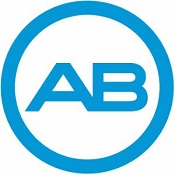Interview with Tracey Kruger, Vice President of Marketing at Advanced Bionics, LLC
Topic: ClearVoice Speech Enhancement Technology
 CAROLYN SMAKA: I'm back with Tracey Kruger from Advanced Bionics to talk about a new cochlear implant (CI) sound processing innovation called ClearVoice. Tracey, what was the goal behind this new sound processing technology?
CAROLYN SMAKA: I'm back with Tracey Kruger from Advanced Bionics to talk about a new cochlear implant (CI) sound processing innovation called ClearVoice. Tracey, what was the goal behind this new sound processing technology?TRACEY KRUGER: ClearVoice is intended to help AB recipients hear better in very difficult listening situations. It analyzes the environment and separates the sound coming into the microphone into different bands. It analyzes each band to determine whether or not the information in it is primarily a speech signal or unwanted noise. It is the first algorithm available in the market that enhances speech, improving the signal-to-noise ratio, to help recipients hear better in very, very challenging listening situations.
Recipients have reported they really have noticed a big effect in noisy places, for example in train stations and airports, and even in the car. There were people who said, "I was listening to the radio driving into work, and for the first time ever I actually understood the words in a song that was playing on my car radio." Already ClearVoice has made a big difference;the feedback received so far has been overwhelmingly positive.
SMAKA: What kind of testing or validation was done on ClearVoice prior to its launch in the U.S.?
KRUGER: ClearVoice was available in Canada and several other countries in the world for some time before it was approved in the United States. We did a multicenter clinical study in the United States as was required to achieve approval by the FDA. That clinical trial allowed 46 adult recipients to use ClearVoice under a stringent protocol design that was developed under the oversight of the FDA. The trial went fantastically well and we were able, for the first time in the history of the industry, to achieve a superiority claim, indicating that ClearVoice significantly improves patient performance.
Typically, when a manufacturer wants to initiate an IDE (Investigational Device Exemption) for product approval, representatives from the company need to meet with the FDA prior to starting the trial to ensure that the protocol design is acceptable to achieve the desired claims. Most sound processing strategies that go into clinical study have what is called a "non-inferiority" design, which means that the manufacturer is saying up front that the new technology is the same and not worse than the baseline technology. Once the trial is complete as long as the new product on average does not make performance worse, it will receive FDA approval.
We were very confident based on our early experiences with ClearVoice that it would improve patient performance over the baseline strategies. We pursued a superiority design, indicating that we believed ClearVoice would yield a statistical improvement in performance for the majority of patients over their baseline strategy. And that is exactly what happened. One-hundred percent of patients showed benefit with ClearVoice and 93 percent of the recipients in the clinical study said they would use ClearVoice for their all-day, everyday program. It was a real landmark study for the cochlear implant industry.
After the participants fulfilled the requirements of the trial, they had to have ClearVoice removed from their sound processor, and have their baseline program restored. Between the time that the study took place and the time that ClearVoice became commercially available, the number of these participants contacting us trying to find out when it would be available and how they could get ClearVoice was astounding.
In addition to the U.S. studies, several more single-center studies have been conducted in various countries around the world to evaluate the benefit of ClearVoice. For instance, a study in Canada evaluated the benefit of ClearVoice in children. They saw very similar results to what we saw with our adult recipients in terms of speech perception benefit and preference. ClearVoice is working the way that it should, and improving the signal-to-noise ratio so that speech is easier to understand. Some studies have shown that it's actually complementary to other technologies such as FM.

SMAKA: What is the process for recipients with an Advanced Bionics cochlear implant who want ClearVoice?
KRUGER: ClearVoice is available to any adult Advanced Bionics recipient who has a CII or HiRes 90K cochlear implant and uses a Harmony or Neptune sound processor. They can get it simply by contacting their programming audiologist and making an appointment to have a fitting session.
SMAKA: Should a recipient expect to notice benefit over time, like an acclimatization period?
KRUGER: What we learned from the ClearVoice IDE as well as other studies is that the benefit recipients receive is immediate. We looked at both the acute and the long-term performance, and the majority of people were able to show instantaneous benefit in difficult situations with the use of ClearVoice. I would say that an acclimatization period is typically the case for many new sound processing strategies that are developed and brought into the market, but because ClearVoice is built on our HiRes Fidelity 120 technology, the vast majority of the recipients experience an enhancement to a sound processing strategy that they are already familiar with. Since ClearVoice doesn't detract from it in any way, recipients are able to have a very seamless crossover. We have had patients say that they left the clinic, went into the parking garage and already noticed ClearVoice working.
SMAKA: Will the results of the US IDE be made available?
KRUGER: Yes, the results of the IDE will be published in our package insert. We will also publish the results of the study in various other forms like in informational materials, white papers and on our website.
SMAKA: Tracey, you and I have spoken previously about Advanced Bionics being acquired by Sonova, and some focus on merging hearing aid and cochlear implant technology. Is ClearVoice something that we have seen in hearing aids?
KRUGER: No, ClearVoice is completely unique to Advanced Bionics;it is proprietary technology. There are a number of hearing aids that offer various types of speech improvement features, but none of them work exactly the same way that ClearVoice does.
However, there is some interesting work that has been published in Europe by researchers at the Medical University of Hannover (MHH), which is a very large cochlear implant and research center in Germany. They looked at the synergistic benefits of ClearVoice combined with some of the Phonak front-end processing technologies, and the data look very promising. It seems very likely that we can achieve an even greater benefit by combining Phonak technologies with ClearVoice. It is very exciting to have so many options available to explore with Phonak that may take the level of performance for AB patients even higher. After all, people choose a cochlear implant because they want to hear better. We believe that it is our responsibility as a manufacturer to do all that we can to provide performance-enhancing technologies throughout the journey to hearing for patients who have selected our device.
SMAKA: Very interesting. Thanks for your time in catching me up on ClearVoice.
KRUGER: Thank you, Carolyn.
For more information, visit the Advanced Bionics Web site at https://www.advancedbionics.com or the Advanced Bionics web channel on AudiologyOnline.

